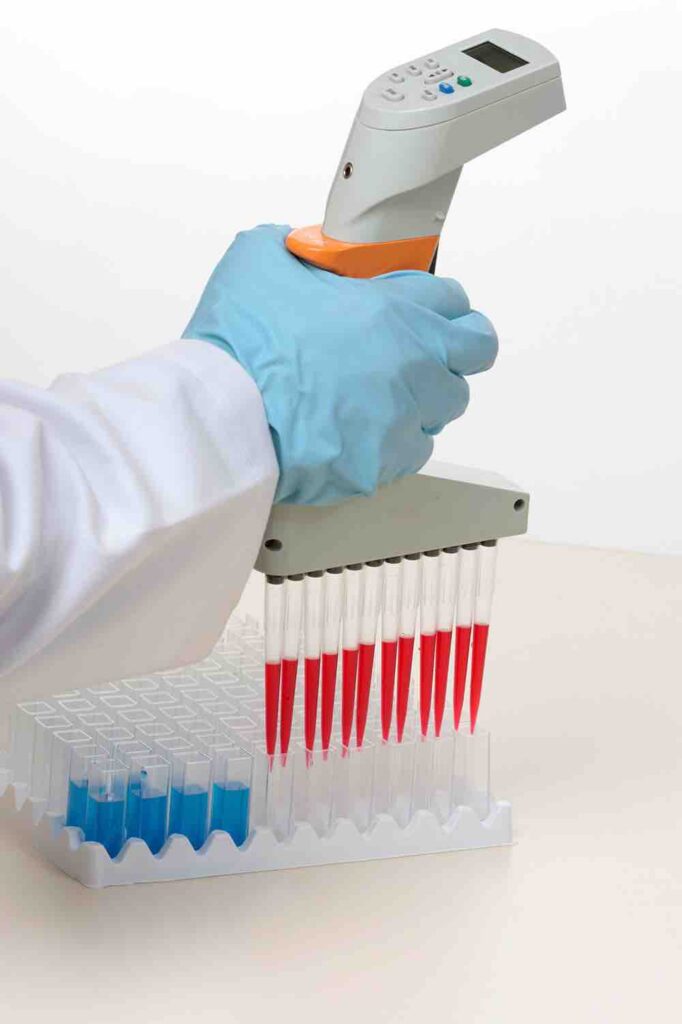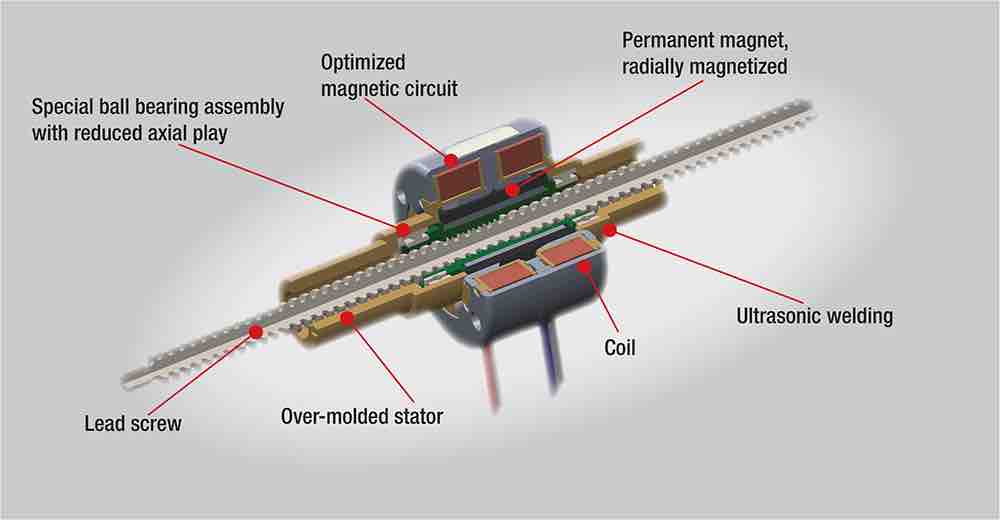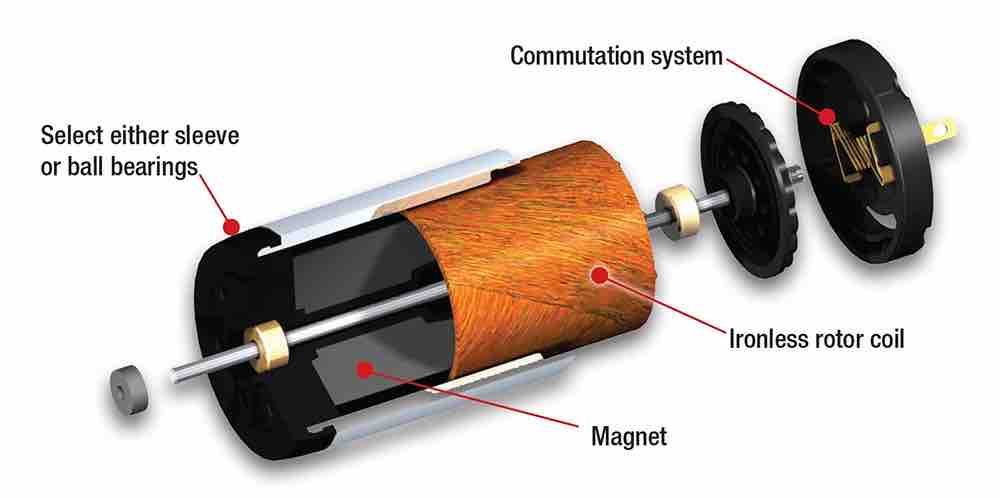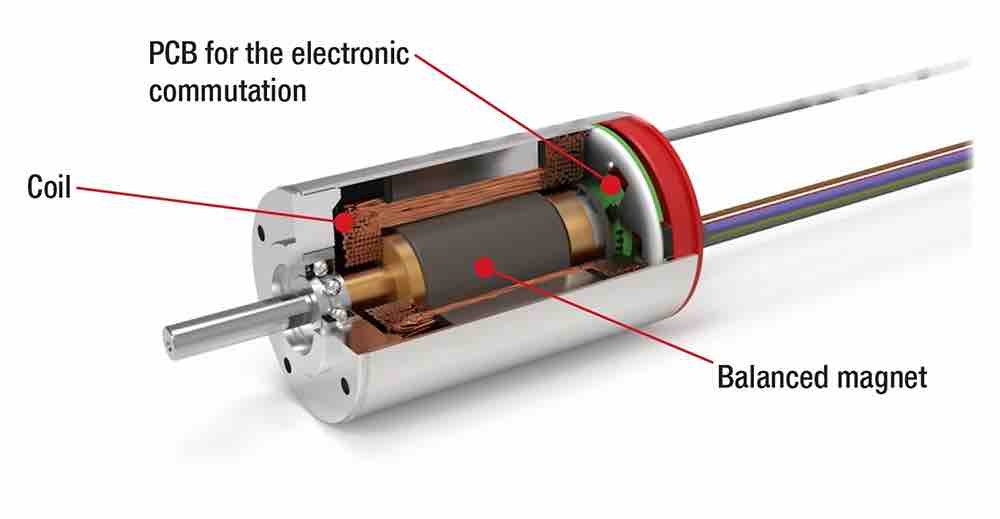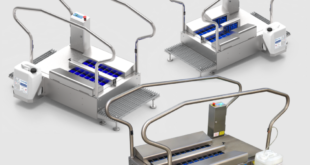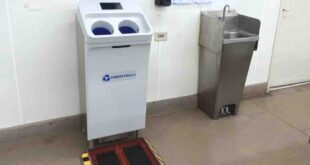Ageing populations and the increase in preventative care have been primary catalysts for continual growth within medical research. In response to an increasing workload in laboratories, motorised tools and equipment are enabling scientists to cope with demands. While automated machinery and devices are increasing the speed and efficiency that scientists can prepare, manage, and analyse samples in the lab, the reliance on motion systems for accuracy and reliability means that selection of the right motor is vital. Clemence Muron explains
Prior to analysing a liquid sample within a laboratory setting, the technician will complete a series of steps and tests. Using a pipette, the sample is transferred between receptacles of various reagents. Pipettes typically consist of a system of cams, pistons, and cylinders. When the piston is moved, a partial vacuum is created, and the liquid is drawn into the pipette tip.
Traditionally manually operated, integrating a miniature electric motor inside the pipette can improve the accuracy and repeatability of the process. Pipettes typically need a resolution of one microlitre per increment with an inaccuracy tolerance of less than 1%. This precision has to be repeated for every subsequent manipulation, but electronic pipettes can achieve these results, every time.
The advantage of increased accuracy and repeatability means that labs can use smaller volumes of reagents, saving costs across the process. Combining the confidence of improved accuracy and repeatability, and that the electronic mechanism reduces manual force in operation, technicians can also work faster, increasing lab productivity.
Pipettes and stepper motors
At the heart of the electronic pipette is a stepper motor. The linear stepper motor or digital linear actuator is most well suited, and the built-in lead screw interfaces directly with the e-pipette’s piston to actuate the device’s linear movement. Stepper motors have several magnetised poles, so the current commutates several times during one rotation. This achieves high torque and smooth control, providing the accurate and stable positioning required. And, as the stepper motor rotates incrementally at each current pulse, it’s simple to control with no encoder required. The accuracy of the motor, as well as the possibility for micro-stepping, also provides a very high resolution. Thanks to a stepper motor’s electronic commutation, this also provides the advantage of no mechanical wear, meaning that steppers have a long lifespan.
For e-pipette design, an alternative is the coreless brush DC motor. As the rotor only comprises a coil and shaft, as opposed to an iron core, it has no iron losses, which significantly improves efficiency and acceleration. As electronic pipettes are battery powered, this enables longer use from a single charge. However, brush DC motors require additional components, such as belt drives and encoders, for the conversion of rotational motion into linear motion and control of the motor. This drawback adds cost, offset against the lower initial cost of the DC motor compared to the stepper. The additional components of the DC motor system can also add the potential for errors in positional accuracy.
Robotic pipettes and BLDC motors
As well as e-pipettes, automated machinery increases the speed and efficiency of a variety of tasks in the laboratory, including robotic pipettes that can manipulate and analyse trays of samples at a time. As relatively small individual sample sizes are required, this enhances the need for accuracy and repeatability. Speed within robotic systems is also critical; the samples need to be processed fast to get the results quickly.
In this case, the brushless DC (BLDC) motor combines the advantages of brush DC and stepper motors. As with steppers, BLDC motors use electronic commutation, allowing for a long lifetime, but they also have a lower pole count – typically two or four poles. As a result, fewer commutations are needed for one revolution of the motor, enabling BLDCs to rotate at a faster speed. With a well-balanced rotor and a strong ball bearing assembly, speeds of up to 100,000 rpm is possible with a BLDC motor. Compact by design, BLDC motors also provide high power density.
Motion design for specific requirements
BLDC motors are generally controlled by using positioning feedback, such as integrated hall sensors or encoders. As the rotor position is always known, BLDC motors are a reliable technology. Thanks to the accuracy and reliability of control, BLDC motors are also well-suited for robotic arm applications, such as test tube handling.
The variety of laboratory automation means that motion solution specifications, including the motor, feedback devices, and gearbox, need to answer a range of requirements. To optimise machine design, working with a motion solution designer at outset ensures the most effective performance outcome, with a timescale and deliverables to match market needs.
Clemence Muron is Technical Commercial Program Manager of Medical Markets, Portescap.
 Engineer News Network The ultimate online news and information resource for today’s engineer
Engineer News Network The ultimate online news and information resource for today’s engineer
